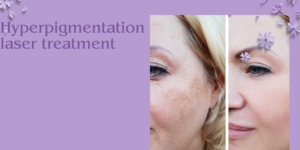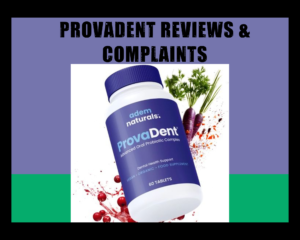
 Hyperpigmentation, the stubborn dark spots or uneven skin tones, can plague many an individual. Hyperpigmentation affects people with all skin types, whether it’s caused by sun exposure, post-acne scars, or hormonal changes. The good news is that hyperpigmentation laser treatment is a highly effective option for restoring a bright, balanced complexion. This comprehensive guide will take a deep dive into what hyperpigmentation laser treatment is, how it works, the benefits, costs, and what to expect in 2025. In addition, we have included a FAQ section to address your burning questions.
Hyperpigmentation, the stubborn dark spots or uneven skin tones, can plague many an individual. Hyperpigmentation affects people with all skin types, whether it’s caused by sun exposure, post-acne scars, or hormonal changes. The good news is that hyperpigmentation laser treatment is a highly effective option for restoring a bright, balanced complexion. This comprehensive guide will take a deep dive into what hyperpigmentation laser treatment is, how it works, the benefits, costs, and what to expect in 2025. In addition, we have included a FAQ section to address your burning questions.
What Is Laser Treatment for Hyperpigmentation?
Hyperpigmentation laser treatment is a procedure in which expert laser technology is used to remove the excess melanin (the pigment responsible for dark spots) in the skin. Lasers direct intense energy to only the areas needing treatment, which minimizes discoloration and does not harm the surrounding tissue. The result? A more even skin tone, which is smoother.
Lasers for hyperpigmentation are of different types, such as:
Q-Switched Nd: YAG Laser: Best for deeper pigmentation and safe for darker skin.
CO2 Laser: It aims directly at discoloration on the skin’s surface and chances skin’s template.
PicoSure Laser: Have ultra-short pulses that provide quicker outcomes with less downtime.
IPL (Intense Pulsed Light): A milder solution for softer pigmentation problems.
Each laser is designed for different concerns and skin tones, so speaking with a dermatologist is essential to picking the right one.
How Does Hyperpigmentation Laser Treatment Function?
It’s a simple process, but one that depends on state-of-the-art technology:
Consultation: A dermatologist evaluates your skin type, pigmentation severity and medical history to recommend the best laser.
Preparation: Your skin will be cleaned, and a topical numbing cream may be applied to reduce any sensation.
Process Involved – Laser: The laser produces sharp light energy, and melanin absorbs it within dark spots. This breaks this pigment into smaller particles.
Things Will Get Better: Your body naturally excretes this fragmented pigment over the course of days or weeks, leaving clear skin behind.
Important After-Care: Topical creams after treatment will include sunscreen, moisturizers and smaller amounts to prevent sun exposure and pigmentation.
Sessions last typically between 15–45 min (longer if more than one body area is being treated) with the majority of patients needing 2–6 sessions for best results.
Extreme Benefits of Hyperpigmentation Laser Treatment
Here are the top benefits:
Precision: Lasers attack only pigmented parts and avoid healthy skin.
Working: One session can help a lot of patients improve significantly.
Limited Recovery Time: Many procedures have little to no downtime, so you can return to your routine quickly.
Versatility: Effective for different skin types and pigmentation concerns, including melasma and post-acne spots.
Want Lasting Results: Results, when accompanied by good skincare and sun protection, can last for years.
What to Expect: Downtime and Costs
2025 Laser treatment for hyperpigmentation is the cost On average:
Per Session: $200–$800
Extended Treatment (multiple sessions): $500–$3,000
Pricing is also determined by factors such as the expertise of the dermatologist, and the severity of the pigmentation. Be sure to ask for a detailed quote during your consultation.
Most laser treatments have little downtime. You can expect some mild redness, swelling, or light peeling for 1–5 days. PicoSure and Q-Switched lasers usually have the most minimal downtime, while fractional CO2 lasers may take a few days for recovery.
How Safe is Hyperpigmentation Laser Treatment?
Hyperpigmentation laser treatment is generally safe for most skin types when conducted by a certified dermatologist. However, risks include:
Sensitivity or irritation for a short period
Hyperpigmentation or hypopigmentation (rare, primarily with improper settings)
Scarring (extremely rare with modern lasers)
To best mitigate the risks, pick a board-certified dermatologist who has treated your skin type before and follow all of their aftercare instructions to the letter.
How does laser treatment work compared to other hyperpigmentation treatments?
. Risks of chemical peels (sometimes effective for mild pigmentation) and increased downtime.
. Topical Creams (Hydroquinone, for example): Inexpensive and slower — results don’t come for weeks or even months.
. Microneedling: Creates better texture and some mild pigmentation reduction, though not as focused as lasers.
. Lasers usually offer speedier, more dramatic results, particularly when dealing with stubborn or deep pigmentation, and as such are a favorite for many.
Tips for Best Results in 2025
Here are some tips for how to make your laser treatment for hyperpigmentation as effective as possible:
. Daily Apply Sunscreen: Exposure of UV worsens pigmentation so apply SPF 30+ every day.
. Aftercare: Don’t use any irritating skin-care products or expose to the sun for at least seven days after treatment.
. Be Consistent: Follow the recommended number of sessions for the best outcome.
. Keep a Skincare Routine: Add brightening actives such as vitamin C or niacinamide to your routine for sustained effect.
Common Questions About Hyperpigmentation Laser Treatment
Q How Many Sessions Are Required for Laser Treatment of Hyperpigmentation?
Depending on the severity of pigmentation and the type of laser used, most patients need 2–6 sessions (4–6 weeks apart).
Q Does painful, hyperpigmentation laser treatment hurt?
A pinch, or snapping sensation, is common. Numbing creams and cooling devices are commonly used to improve comfort.
Q Is laser suitable for all skin types for hyperpigmentation?
Yes, although some (Q-Switched Nd:YAG, for example) are a lot safer on darker skin tones. See a dermatologist to select the right laser for your skin.
Q How Long Do Hyperpigmentation Laser Treatment Results Last?
Results can last for years with the proper sun protection and skin care. But unless preventatively, pigments may develop again.
Q Will hyperpigmentation laser treatment cause any side effects?
Temporary side effects can be redness, swelling or peeling. Uncommon risks are scarring or pigmentation changes, particularly if aftercare is not adhered to.
Q What is the cost of hyperpigmentation laser treatment in 2025?
Sessions cost $200–$800 each, while full treatments run $500–$3,000, depending on the clinic and type of laser used.
Conclusion
Hyperpigmentation laser treatment — A breakthrough solution for clear skin Advanced lasers, such as PicoSure and Q-Switched Nd:YAG, allow you to combat dark spots, melasma, and acne scars with little downtime and remarkable results. By selecting the right dermatologist, and following proper after care, you’ll be on your way to radiant skin in 2025. Ready to start your journey? Get a consultation today and find the right laser treatment for you.
Table of Contents
SEARCH HERE
CATEGORIES
RECENT POSTS



Advanced Mitochondrial Formula 2025: Can It Truly Recharge Your Energy Levels?

The Truth About Aquaponics 4 You (2025): Does It Actually Work?




Hepato Burn Supplement Review: What You Need to Know Before Buying



“The Ultimate Guide to Papillex: Natural Immune Support for HPV Relief”



Slim Down Naturally: The Truth About Plant-Based Fat Burner That Actually Work

TedsWoodworking Review 2025: Is It Worth It for Your DIY Projects?




“Immunotherapy vs. Chemotherapy: A New Era in Cancer Treatment”





“The Ultimate Guide to Hyperpigmentation Laser Treatment in 2025”


Is UV 7 Good for Tanning? What You Need to Know Before You Glow


Planning a Trip from New Windsor to Grand Canyon? Here’s What to Know


“Your Guide to the Closest Airports to Yosemite National Park”

“How to Create the Perfect Gluten-Free Chicken Soup for Cold Days”



“The Secret to Authentic Creole Sauce: Step-by-Step Recipe”


“Natural Weight Management Made Easy: Exploring Nagano Tonic”


Can Rosemary Oil Reverse Male Pattern Baldness? The Truth Revealed



ProvaDent Reviews & Complaints: Is This Supplement the Real Deal for Oral Health?

“Everything You Need to Know Before Buying the Clawsable Heated Cat House”

“Are Ryan’s Shed Plans Worth It? A Practical Guide for DIYers”


“Miracle Massage Wand and More: Exploring the Ageless Knees Method”

BV No More by Jennifer O’Brien: A Simple, Natural Approach to Tackling Bacterial Vaginosis (BV)

Unlock Your Dog’s Full Potential: A Complete Review of Brain Training for Dogs

“Neotonics Reviews: Pros, Cons, and What You Need to Know Before Buying”

“How to Lighten Dark Lips: Top Lip Lighteners and Remedies”

“Are Seed Probiotics Safe? A Look at Potential Side Effects”

“Liver Detox Juice: Ingredients, Benefits, and How to Make It”

“Rejuvenecimiento Facial: Transform Your Skin and Boost Your Confidence”

Everything You Need to Know About Field Roast Pepperoni: Taste, Texture, and Uses



Mini Bernedoodles: Health, Care, and Training Tips for New Owners

Exploring the Best Vegan Collagen Supplements for Healthy Aging

“Beyond Muscles: The Surprising Ways Creatine Boosts Your Health”

